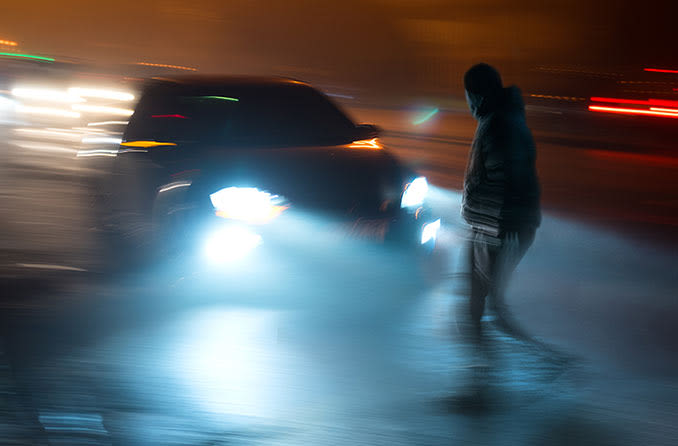Driving at night tips for older motorists: Driving glasses and lenses

One of the most challenging visual tasks is driving at night.
If you are an older driver and are concerned about your night driving vision, here are some suggestions to make sure your night vision is as clear as possible:
Have a comprehensive eye test at least every two years. Update your glasses if there is even a minor change to your glasses prescription.
If you feel your vision has changed since your last eye test, schedule a test immediately.
Tell your optometrist about any problems you experience on the road at night so that you can undergo specialised testing, such as evaluation of your visual field or contrast sensitivity.
If you have diabetes, get your eyes examined at least annually or as frequently as your optometrist recommends. Follow your GP's recommendations regarding diet, blood sugar control, insulin and self-care to reduce the risks of diabetic retinopathy, which can progress to severe vision loss without warning.
TROUBLE DRIVING AT NIGHT? Find an optometrist near you and schedule an appointment.
Ask your optometrist to prescribe glasses for driving that may help you see better on the road from sunset to sunrise. For example, lenses with anti-reflection coating increase visibility and reduce ghost images.
If you are a candidate for cataract surgery, ask your surgeon about replacing your clouded natural lenses with a wavefront guided, aspheric intraocular lens. These artificial lenses are engineered to provide better contrast sensitivity and crisper vision than would be possible with the implantation of traditional, spherical intraocular lenses.
Be extra cautious when approaching intersections. The Australian National Road Safety Partnership Program (NRSPP) website states, crashes at intersections represent 50 percent of all urban and 30 percent of all rural crashes. Fatal accidents involving people over 65yrs of age are more likely to occur at an intersection.
Expert advice for driving safely
Again according to NRSPP - 40 percent of accidents occur at night and 90 percent of a driver's reaction depends on vision. A 50 year old will need twice as much light as a 30 year old would need to see clearly. Here are additional safe night driving tips, prepared by the Royal Society for the Prevention of Accidents (RoSPA):
Use your lights appropriately.
Don't stare at oncoming vehicles.
Keep windows clean.
Watch out for children, cyclists and animals.
Get your eyes tested.
Don't get behind the wheel when tired.
Hone your night-driving skills.
And just in case... carry night driving essentials (torch, blanket or warm clothing).
Watch out for animals - hitting an animal accounts for only 5 percent of accidents but in Australia 9 out of 10 times the animal is a kangaroo
If you are still uncomfortable driving at night after following the recommendations above, have a friend or family member (who has a valid driver’s licence) drive.
Or, for short trips, leave the car at home and call a taxi, a ride-sharing service or use public transport.
Page published on Tuesday, 17 March 2020






